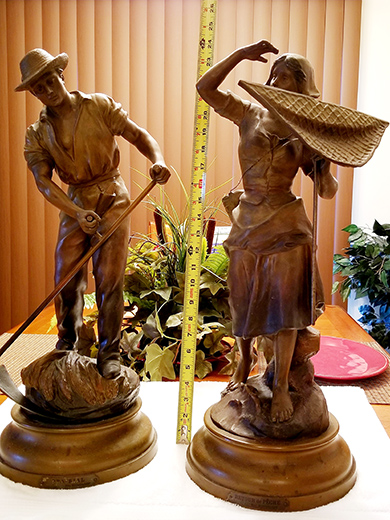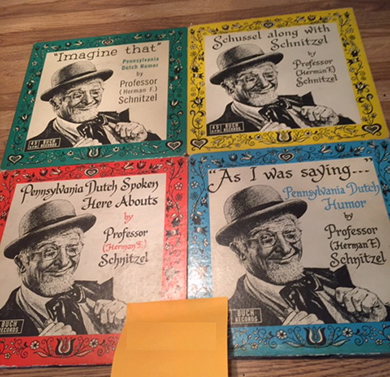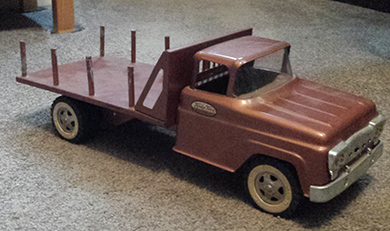 |
|
|||
 |
 |
|||
RINKER ON COLLECTIBLES — Column #1667 Copyright © Harry Rinker, LLC 2018 Questions
and Answers
QUESTION: I have a large mollusk shell that measures about eight inches in diameter. It has an elaborate relief carving of an oval nativity scene cartouche in the top three-quarters and a smaller cartouche scene of Joseph and Mary traveling to Bethlehem beneath. Banner with “BETHLEHEM” separates the two cartouches. The border motif is flowers and scrolls. The bottom cartouche is flanked left and right by reticulated, detailed floral filigree. The piece belonged to an aunt. I am curious about its origin, age, and value. – BH, Reading, PA, Email Question 
ANSWER: You have a mother of pearl object, most likely made in Palestine if prior to 1948 or in Israel if post-1948. I favor an earlier date. Mother of pearl is made from the inner lining of a mollusk shell. Sources include abalone, freshwater pearl mussels, and pearl oysters. The iridescent lining, called nacre, protect the mollusk from parasites and bacteria. The layer contains a combination of calcium carbonate, crystals, silk proteins, and other materials. Mother of pearl offers several distinct advantages. It will not bend, expand, move, or shrink. It can easily be carved with a knife or ground by machine. It is used in a variety of jewelry forms including beads, brooches, necklaces, pendants, and pins. It also is used to create religious and other souvenirs. The carving of mother of pearl dates back to the Bronze Age. Franciscan monks from Damascus introduced the craft in Bethlehem in Palestine in the 15th century. Mother of pearl carvings from Palestine first appeared in the United States at the 1853 World’s Fair, known as the Exhibit of the Industry of All Nations, in New York. Mother of pearl jewelry was popular in the late 19th and early 20th centuries. Mother of pearl nativity scenes were and remain popular tourist souvenirs for those visiting the Holy Land or purchased at a religious shop. Dating pieces is difficult since carvers have continued to produce the same designs for centuries. If your aunt visited Palestine or Israel, she most likely bought it new at that time. Early to mid-20th century is a good guess for the age of the piece you own. Although a good size and elaborate, I rate it a seven and one half on a quality scale of 1 to 10. Mother of Pearl carving also was done in Europe, especially sections of Italy. Unless a piece is marked, such as the one you own, identifying its country of origin is difficult. Your piece was made in Palestine or Israel. WorthPoint.com has more than 100 listings of mother of pearl nativity scenes. Based on comparable pieces, the secondary market value of your carved mother of pearl nativity scene is between $75.00 and $90.00. Heed the following to care for your nativity scene. Keep it away from direct sunlight or a strong heat source. Avoid storage in an area with little humidity; mother of pearl will crack if it becomes dry. Perfumes, perspiration, and suntan location will cause it to discolor. Mother of pearl will scratch if mishandled. Clean only by wiping a piece with a chamois, microfiber jewelry cleaning cloth or soft cloth. QUESTION: My grandfather was an antiques dealer in Otterville, Missouri, in the 1960s. He acquired a matched set of Kinsburger bronze colored statues, one portraying a farmer using a scythe and the second a farmer’s wife. Both appear to be involved in harvesting grain. When my grandfather passed away in 1980, I inherited them. They look like bronze but are not heavy enough, albeit each weighs about five points. They sit on metal bases and are approximately two feet tall. I have always wondered about their origin and value. – SS, Sedalia, MO, Email Question 
ANSWER: Sylvain Kinsburger (January 21, 1855 – April 21, 1935) was a French sculptor and medalist. Your description of your two statues and the images that you provided prompted me to research the Kinsburger bronze sculpture vocabulary available on the internet. I was not surprised when I failed to find the two images. At worst, your two statuettes are knock-offs. They do not demonstrate the quality of a Kinsburger bronze. At best, they are mass-produced inexpensive copies of Kinsburger pieces. After studying Kinsburger sculptures, I concluded they are knock-offs. The male figure appears to be patterned after Linsburger’s Le Revers. I found no period Kinsburger pieces with similar base treatments. The metal label reading “RETOUR de PECHE,” which translates as “Return from Fishing” makes absolutely no sense in terms of the sculpture. Based on your description, the pieces are made from a slush or white metal and bronze coated to preserve affordability. Your statuettes were most likely made in the late 19th or early 20th century. They were placed on tables in hallways or parlors to inspire individuals to emulate the values associated with the agrarian life—hard work and honest labor. Although your statuettes do not have strong collector value, they do have decorative conversational value. Judging from the photographs that accompanied your email, they appear to be in very good condition. The pair has a secondary market decorative value between $100.00 and $125.00. QUESTION: I have four 45 rpm records by Professor [Herman F.] Schnitzel in their period album covers. The four titles are: “Imagine that—Pennsylvania Dutch Humor,” “Schussel along with Schnitzel,” “Pennsylvania Dutch Spoken Here Abouts,” and “As I was Saying---Pennsylvania Dutch Humor.” Do they have any value? – RB, Altoona, PA, Email Question 
ANSWER: Growing up in Pennsylvania German (also known as Dutch) country, I am acutely aware of the Pennsylvania Dutch accent, which I occasionally slip back into, and humor. The Pennsylvania Germans are great storytellers. Their humor is internal. Rather than making fun of other people, they make fun of themselves. As a result, it is common to hear them referred to as the Dumb Dutch. Dumb they are not. Theodore L. Richenbach (1903-1969), aka Professor (Herman F.) Schnitzel, hosted a morning show on WHUM in Reading, Pennsylvania, in the 1950s and 1960s. Born in Reading to Pennsylvania German parents, he learned the Pennsylvania German dialect at home. When he was 16, he found a job at Narrow Fabric in Wyomissing, a suburb of Reading. Known for his sense of humor, he quickly earned the nickname “Professor Schnitzel.” His radio career started in 1931 when he partnered with Earl Shappel on the “Professor Schnitzel with Earl” show. When Allen Lane replaced Earl Shappel, the show became “Professor Schnitzel and Al.” Richenbach’s Professor Schnitzel character was popular at service clubs, fairs, and community events in the greater Reading area. His humor used a mix of Pennsylvania German dialect and fractured English with a German accent. “Pennsylvania Dutch Spoken Here” was released in 1961, “As I Was Saying” in 1962 (two versions), “Schussel Along with Schnitzel” in 1962, and “Imagine That” in 1963. Professor Schnitzel often sold the four albums as a set at his presentations. There was a fifth 45 rpm album “Dutch as Sauerkraut” issued in 1968. A 33 1/3 compilation album entitled “Best of Professor Schnitzel” was issued in 1964. I checked recent sales on WorthPoint.com. I was surprised at how often the four records appeared as a single lot. Sell through prices ranged from $15.00 to $20.00 for the set. Single records sell between $4.00 and $5.00. There are four reasons the value is low. First, the records are regional in appeal. You need to be Pennsylvania German or live in Pennsylvania German country to appreciate the humor. Second, the cover art varies little between album covers. Third, few individuals own 45 rpm record players. Finally, anyone desiring to listen to one or more of the records need only go to YouTube. There are numerous YouTube videos of the sound tracks. Auch du Lieber, Sie kann Professor Schnitzel hören. QUESTION: I have a Tonka truck I cannot identify. It has a red cab and a body with shield with a triangle support on each side at the cab end and four posts along each side. Can you identify the model? – KB, Email Question 
ANSWER: You have a Tonka interchanger truck with a lumber bed. The truck was introduced in the mid-1950s. Your truck is from the late 1950s and is modeled after a 1958-1959 Ford chassis. This Tonka truck came with two interchangeable beds—a lumber bed and a rack bed. Collectors prefer the earlier versions of the truck. A fair secondary market value for your truck is between $50.00 and $65.00. Harry L. Rinker welcomes questions from readers about
collectibles, those mass-produced items from the twentieth and twenty-first centuries.
Selected letters will be answered in this column.
Harry cannot provide personal answers.
Photos and other material submitted cannot be
returned.
Send your questions to: Rinker on Collectibles, 5955 Mill
Point Court SE, Kentwood, MI 49512.
You also can e-mail your questions to
harrylrinker@aol.com.
Only e-mails containing a full name and mailing address
will be considered.
You can listen
and participate in
WHATCHA GOT?, Harry’s
antiques and collectibles radio call-in show, on Sunday mornings between 8:00 AM
and 10:00 AM Eastern Time.
If you
cannot find it on a station in your area,
WHATCHA GOT?
streams live on the Internet at www.gcnlive.com.
|
||||